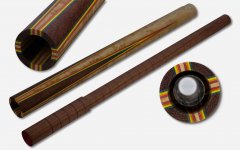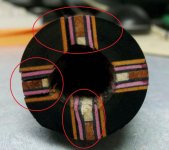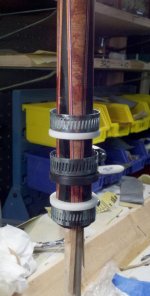I am about to glue the points into an amboyna burl forearm. It has already been cored and plugged. After the points are dry, I want to then rebore the plug out and assemble the forearm onto a single core cue I am building. My question is, Is this wise to do? My concern is that the burl or the points may break/blowout as I do the core drilling. I plan on doing it a 5/16 thru hole, then .680 and then the final .750 to reduce stress and heat. Any advice?
Thanks in advance.
Dave
Thanks in advance.
Dave


